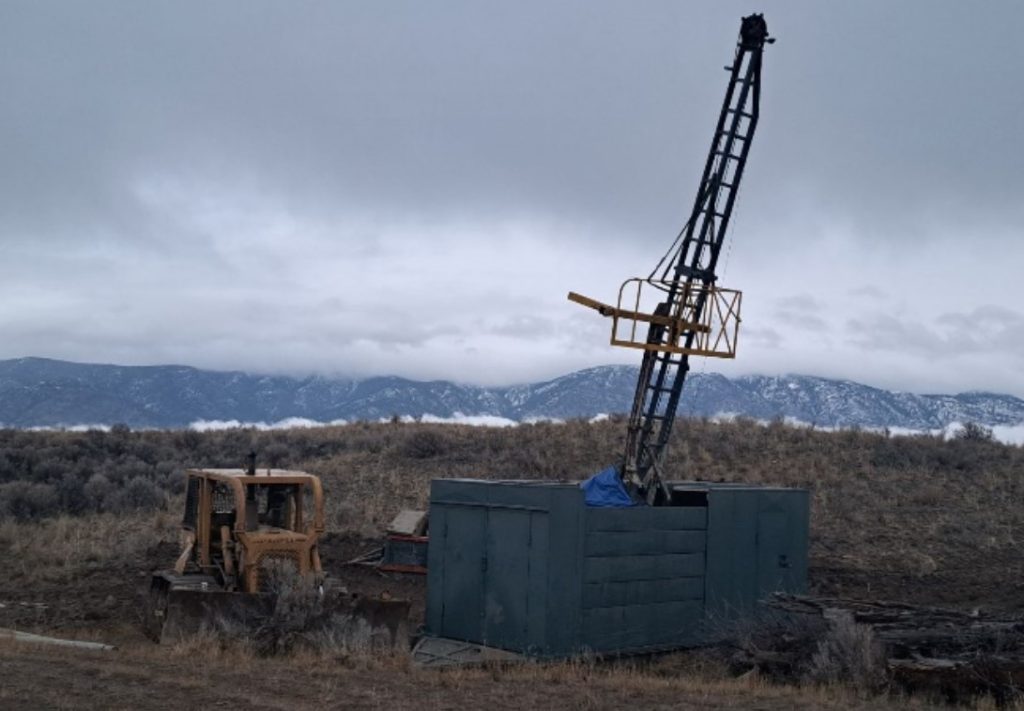Recharge Resources drills 5.08 g/t gold over 3.5 metres at Brussels Creek, British Columbia

Recharge Resources Ltd. [RR-CSE; RECHF-OTC; SL50-FSE] reported all assays have been received from the fully financed, spring drill program at its 100%-owned Brussels Creek gold-copper-palladium project near Kamloops, British Columbia, Canada. A new near-surface discovery has been made of a gold zone from 25.75 metres to 29.25 metres (3.5 m) assaying 5.08 g/t gold.
The aim of the 900-metre NQ drill program was to test the potential for copper-gold mineralization similar to that present at the adjacent New Afton mine owned by New Gold Inc. ($1.18-billion market cap). The New Afton mine occupies the site of the historic Afton open-pit mine, which operated from 1977 to 1997. The present mine and concentrator facility commenced production in July, 2012. The mine is a block caving operation. In 2021, the mine produced 52,542 ounces gold and 61.7 million pounds copper.
Chief executive officer David Greenway summarized: “Recharge is pushing forward on all fronts with drilling at the Brussels Creek copper-palladium-gold project. Future work will zero in on large geophysical and geochemical anomalies near the new gold zone. Drilling is pending at the Pocitos lithium brine project and a spring recon program now approved for the Georgia Lake Lithium project.
“This is a pivotal time for the Brussels Creek project in B.C., with the drill program successfully indicating a significant bedrock gold zone.”
The Brussels Creek project is an early-stage exploration property, located approximately 24 km west of Kamloops, and is immediately adjacent to New Gold’s New Afton mine. The property has 17 claims (66 cells) covering 1,350.43 hectares. The geological setting of the property is very similar to New Afton, a silica-saturated copper-gold alkalic porphyry-style deposit, as well as the Highland Valley, Mount Polly, Kemess and Galore Creek deposits. Recent field observations noted the presence of a substantial mineralized quartz-feldspar porphyry body intruding the overlying Nicola group volcanics. Historic sampling and mapping on the property, in 1983 and 1984, located a broad anomalous zone (200 metres by 400 metres) with gold values up to 3.5 g/t. Grab samples taken from the property in 2019 include values of 10.1 g/t gold (with 0.7 g/t palladium) and 11.5 g/t gold.
The interval that ran 7.44 g/t gold came back in the quartered core as 16.35 g/t gold between 28.75 metres and 29.25 metres.
Over the 3.5 metres from 25.75 metres and 29.25 metres the quartered core averaged 5.08 g/t. Gold mineralization starts at the overburden-bedrock contact.
The area drilled focused on the southeast eTh/K anomaly coincident with strong IP (induced polarization) response. Future work will zero in on the eTh/K anomaly A to the northwest of the 2023 drilling once archeological studies are completed.
